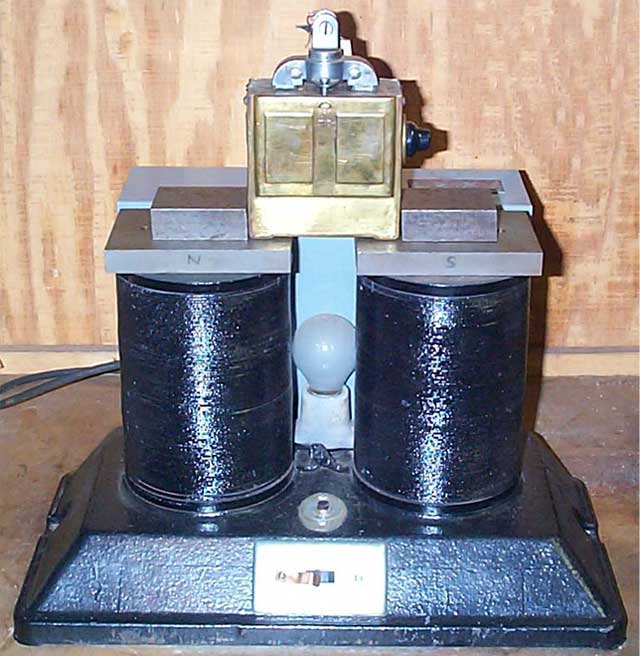
How To Build A Magneto Magnetizer Pdfescape
Guys -- I don't have an electrical engineering background and I don't know where else to look on the 'net so I'm hoping that I can get a collective answer here: Briefly, I'm working on building a powerful electro-magnet that I'll be using to re-magnetize vintage motorcycle magnetos after they've been rebuilt. I'm modeling mine after the physicist Charles Falco's who's been gracious enough to share his plans with me. The big stumbling block is where can I source the soft iron needed for my core?
Magneto Magnet Charger Bought the Gingery book on 'How to build a Magneto Magnetizer'. The author spouts how cheap the magnetizer can be made. Of course, the book was written in 1994.
I'm looking for a round of 3.5' in diameter up to 33' in length. I'll be cutting and then machining it in three sections. In days gone by it was known as 'Swedish Steel' (because the Swede's were arguably the best at making the stuff back in the 1950's) or sometimes as 'Armco' steel (for American Rolling Mill Company who were also makers). This isn't your basic round of mild steel. Again, it's soft iron that is 99.8%+ pure iron.
Is anyone familiar with this or know where it can be obtained stateside? I really need this because, as per the attached picture with notes, I'm shooting for an electro-magnet that will provide me with a core winding of 75,000 ampere/turns. It'll be drawing somewhere around 18 amps off at 220 volts. I can't use mild steel because then I won't be able to achieve the level of magnetic saturation needed. I asked Charles where he sourced his and as he built his over ten years ago he's not sure where his core material came from. I also asked him if I could bundle smaller rounds or even soft wire together to get the needed overall diameter but he was doubtful as to it's effectiveness and said any changes on my part from his plans means I'm on my own.
I'll finish for now by writing that I'm going with such a strong electro-magnet because the last generation of 1950s-era motorcycle magnetos had alloy magnets that were about 26 times stronger than the old tungsten steel based magnetos of the 1930s. Does anyone have any thoughts on this?
Thanks -- Chris. I had a good relationship with a local magneto repair shop and I would re-magnetize magnets from my own magnetos, speakers and polar relays. The magnetizer was rated at 6 volts 300 amps.  Commercially made and quite old.
Commercially made and quite old.
Two 6 volt heavy-duty batteries were wired in parallel, estimated 400+ amp/hrs available. Control was simple, old truck floor stater button wired in series with the magnetizer. Place work and pole pieces on surface poles, block of wood so pole pieces don't jump together. Keep fingers away.
Press button, smack magnet with hammer, release button, done. The core of the magnetizer was not laminated as the flux was not changing. GL _________________ Smith's Ale Gives Strength, Smith Bros. Brewers, New Bedford MA. Late 80s/early 90s I had occasion to work with a machine that was used to magnetize the flywheel magnets for 2 stroke engines. The machine dated to the late 70s, and I had to do some repairs on it to get it working.
Then, we used it to magnetize several thousand ceramic magnets for some 'jet-ski' engines. This machine had 2 rack shelves of large electrolytic caps arranged in series and parallel (with balancing resistors). Calman v5 keygen download torrent. I am not sure anymore how many milli-farads this was in total.
Seemed like a lot at the time. The caps were charged with a SCR bridge connected to the secondary of a step up transformer. The machine ran off ordinary 120VAC and not a lot of current.
There was a control board using TTL logic and some analog stuff that controlled the SCR bridge for charge rate and regulation of the final voltage. The charging voltage was loosely regulated and could be set with a knob on the front panel. I recall the max was 600VDC.
A button on the front panel interfaced with the logic board, and when pressed (provided the interlocks were in place), dumped the charged capacitor bank via a big stud SCR on a heatsink to the coil that was wound on the fixture where the magnet was. The front panel had a connector for 4 gauge cables. Cables ran to the fixture along with interlock signals so you could not discharge the cap bank unless the fixture was 'closed'. Very important. Per the manual, this machine was capable (depending on the circuit impedance), of something like 10,000A peak. The magnets we needed to do where about 1-1/2' wide and 3' long and arc shaped. I think the flywheel they were to go in took 6 of them.

I know we had to magnetize 1/2 of the batch 1 direction and the other 1/2 the other direction N vs S. I came up with a simple fixture for this and the guys in the shop made it up. We got a sheet of silicon steel someplace and made a lamination stack the height of the magnet. There must have been at least 20-30 sheets stacked, maybe more. The core was designed in 2 halves and 1 was fixed in place. The other could slide on the big sheet of phenolic we used as a base. The magnet fit in the gap on 1 leg and the other would butt tight when the sliding half of the core was shoved together.